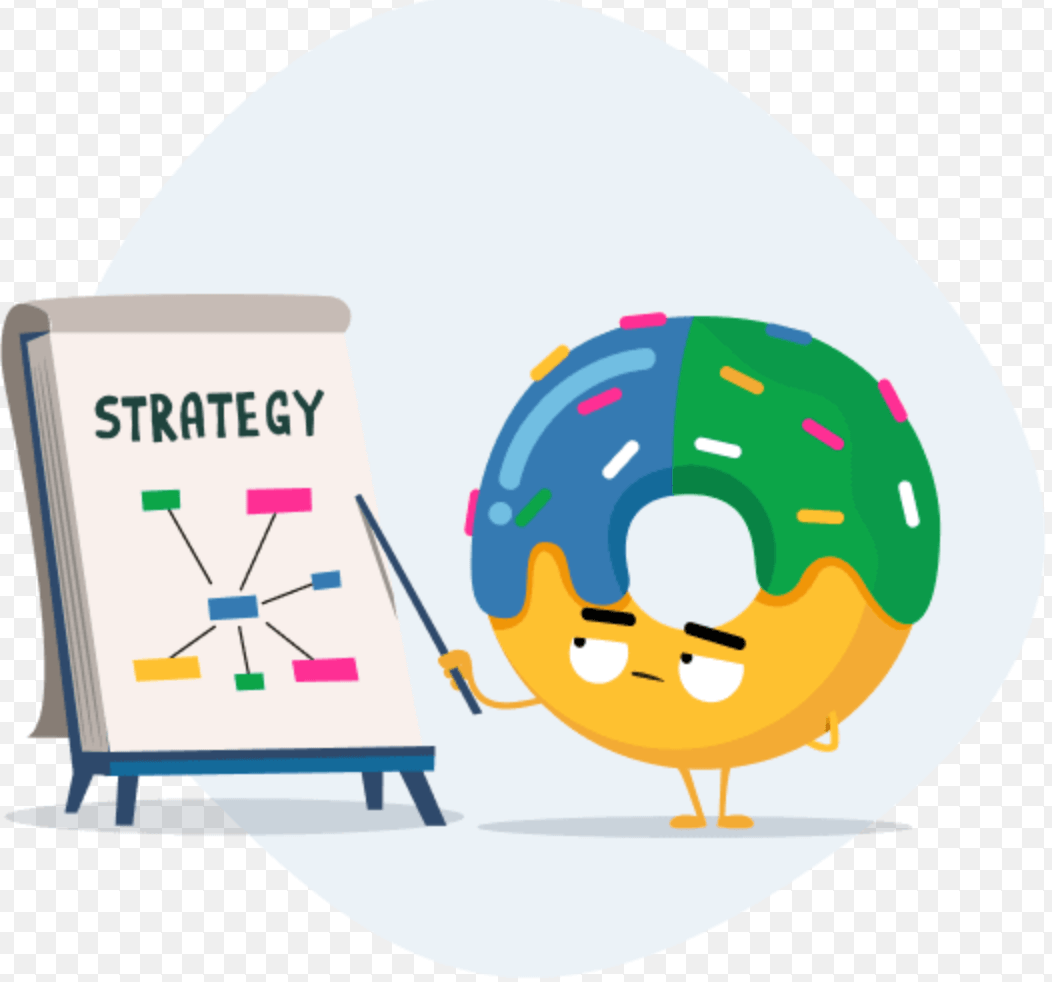Emerging Digital Marketing trends set to dominate the scene in 2024


Unleashing the future: the ongoing transformations of digital marketing
Do you have a degree in economics or marketing? A Master in Business Administration, perhaps? Or maybe you recently attended a training course to master the secrets of online commerce? If so, then you will certainly have heard a statement like the following: “The landscape of digital marketing is evolving rapidly and constantly”.
This is an obvious truth, perhaps, but also an indisputable one. Transformations in digital marketing are fuelled by a powerful mix of factors, trends and events of global scope and impact. These include, for instance, disruptive technological innovations, shifting consumer behaviours, algorithm updates, shifts in the global job market, as well as innovative business strategies promoted by newer entrants to the markets.
The most reasonable question to ask at this point is: what to do? How to navigate such dynamic and ever-evolving trends effectively, keep up with them and stay ahead of the curve? What is going to happen in 2024 and beyond? Please note that this is a dilemma that any business looking to thrive online has to deal with, but also increasingly one that professionals interested in building a solid and resilient career should also be dealing with.
A bit of a headache, isn’t it? But there is some good news: we’re on it. Stay with us, and by the end of this article, you will be equipped with insights to optimise your digital marketing strategy and adapt to the needs and expectations of a more transformative than ever digital landscape.
We’ll take off by exploring two trends from the world of technology, both of which are highly significant: the use of images (videos in particular) and the now ubiquitous usage of Artificial Intelligence (AI). We’ll then move to the human factor, discussing the importance of influencer marketing and conversational strategies (including the use of algorithms). By the end of this journey, you will have a much clearer idea of the emerging trends and the opportunities they may offer to your business.
The Visual Edge: The Power and Mysteries of Video Marketing
So, let’s get started. Trend number one: better say it with a video. Don’t get us wrong: video marketing has been on the rise for some time, but what makes it an interesting trend to keep an eye on is that its importance continues to grow. In 2023, videos account for 82% of all internet traffic. For 2024, videos are expected to grow even bigger, with 91% of global internet traffic.
Here are some more compelling statistics:
- Social videos generate 1,200% more shares than text and images combined, and it’s expected to grow: By 2025, the time spent watching videos by internet users worldwide is estimated to increase to around 60.1% of all social time – about a quarter of the growth rate that was seen between 2019 and 2022.
- 88% of marketers are satisfied with the Return on Investment (ROI) of their video marketing efforts.
- 54% of consumers want to see more video content from brands they support. For many customers, video has become a non-negotiable thing when exploring and making purchases online. The next trend we will see in 2024 consists of even more consumers expecting to see video content and, consequently, marketers investing more resources in video branding.
In a market that rewards those companies capable of promoting their products through an image, the best and most creative ideas are the foundation of major commercial successes. Think of big brands like Martini (that experimented with imaging tools to create fully AI-generated ad campaigns for their products); media companies like National Geographic (that created an experience around their visuals and cultures, peoples, places, and animals), or also of celebrity museums like Getty (that called out to followers to recreate their favourite artworks with items from their own home and share their work on social media).
The revolution behind the corner: Artificial intelligence and marketing
if you follow this blog, you will certainly know the attention we always give to topics of actuality, of which AI is certainly one. We recently reported about the powerful combination of AI and leadership and about the opportunities and challenges of automating teamwork.
In short, don’t be surprised if trend No. 2 looks exactly at that: AI as a boost for smart, impactful and long-lasting digital marketing. All heard before, you say? Agreed, it is true that the digital marketing industry has already been engaging with AI long before the uproar around ChatGPT, Bard and DALL-E, but contemporary AI-driven algorithms can give a strong boost to marketers to personalise content, enhance creative and original content, to optimise ad campaigns, as well as to analyse vast amounts of data to drive better results.
Some noteworthy statistics:
- 80% of marketing executives believe AI improves productivity and efficiency. Experts estimate that labour productivity in developed countries will increase by up to 40% until 2035 due to the influence of AI. Some countries will benefit from more than others: in Sweden, productivity will rise up to around 37%. The United States and Japan will also gain benefits, with 35% and 34%, respectively. In Germany and Austria, AI can potentially maximise labour productivity by around 30% within the next 15 years.
- As of 2022, businesses using AI in their marketing and sales strategies saw an increase in profits by up to 38%, provided that business firms are capable of taking advantage of AI to action insights and deliver valuable customer experiences at pace. In 2024, this trend is expected to continue: more organisations will prioritise AI as a core element of their operations, from customer service chatbots to optimising supply chain logistics
- 60% of marketers use AI to identify prospective customers more effectively. Think of Amazon: a pioneer in personalised shopping recommendations and dynamic pricing – a method in which AI programs can reduce prices when demand is low and do the opposite when it is high.
Is all that simple, then? Not quite so. Bear in mind that of the four cutting-edge trends we selected to help your marketing strategy navigate successfully across turbulent and transforming online and digital markets, this one concerned with AI is by far the most challenging and pervasive. We’ve been writing about this topic already, for example, with regard to job automation and digital leadership.
The gist of the argument is that AI is a powerful ally for any company intent on innovating and reaching its target market, but like all disruptive innovations, it also demands greater efforts from the firms themselves.
So, go ahead with AI to bolster your digital marketing, but don’t forget that even among digitally savvy industries (such as high tech, media, and telecom) the success rate in embracing digital transformation and AI potential does not exceed 26%. Yet in more traditional industries (think of oil and gas, automotive, infrastructure, and pharmaceuticals), success rates fall between 4 and 11%. Moreover, despite some transformations expected for 2024, this trend is not expected to change consistently in the near future.
Emphasising the human element: influencer marketing
So far, we have talked about videos, robots and AI. Fine, but now it is time to emphasise the human element. Our Trend No. 3 is: as automation advances, the added value of the human being grows even more important. Case in point: influencer marketing.
To give you the scale of this trend: we are talking of a thriving industry, set to be worth up to $15 billion by 2023, and one capable of connecting your brand with both large and niche audiences. An astonishing 63% of consumers worldwide trust influencers’ opinions on products or services more than what brands say. The value of the influencer marketing platform market is expected to reach $69.92 Billion by 2029. That’s huge.
Still not convinced? Maybe we can persuade you by sharing some examples of successful campaigns:
- After Fenty Beauty (Rihanna’s cosmetics brand) collaborated with actress and activist Amandla Stenberg to promote their Pro Filt’r foundation and highlighted the brand’s commitment to inclusivity, the Instagram post featuring Amandla Stenberg garnered over 300,000 likes and 5,000 comments within 24 hours – and Pro Filt'r foundation sales increased by 35% in the month following the campaign.
- After having partnered with a range of micro-influencers, the watch brand Daniel Wellington reached 20 million users on Instagram, resulting in a 7% increase in sales within the campaign period and growing 25% during the campaign.
- Nike’s “Dream Crazy” campaign featuring former NFL player Colin Kaepernick boosted sales by 31% within the first week of the campaign’s launch. It generated over 4.2 billion social media impressions in its first 48 hours and increased the company value by $6 billion.
Here you go: when you realise how fast (and unpredictably) the digital market landscape evolves, you realise the importance of having “anchors” to connect with your audiences and be perceived as authentic. Not only influencers may help a brand tap into the authenticity and rapport that they have with their audiences, but also, influencers also excel at creating content that resonates with their audience. By partnering with them, companies can leverage their expertise in crafting compelling content that aligns with the brand’s messaging.
From clicks to conversations: chatbots and conversational marketing
If we talk about engaging content and building trust with the audience, it is clear that we are speaking primarily about building and nurturing human relationships. So, how do you build strong and long-lasting relationships? By exchanging ideas and opinions and by providing mutual help. In a word: with conversation. This is our fourth and final trend: conversational marketing.
Just consider the following facts:
- 53% of consumers are more likely to buy from a business they can message directly. When businesses are capable of entertaining their customers with personal, exclusive, and conversational practices, they receive dozens of different requests and content, and this helps them to build a strong relationship with the clients. In 2024, chatbots are expected to automate 30% of tasks performed by today’s contact centre staff. This can lead to potential savings of $23 billion in the United States alone
- All right, but to entertain the audience effectively would cost a lot of money - you may be thinking. A long time ago, perhaps. Today, technology has come to your aid. Chatbots can answer up to 80% of routine questions, and you can use them for other tasks, like launching a quiz, collecting feedback, or tracking your performance.
- This year (2023), the chatbot market is projected to reach $1.25 billion, a great increase from the market size in 2016, which stood at $190.8 million. The chatbot market is set to expand at a remarkable 23.3% annually, reaching $15.5 billion by 2028
Are you worried that something you might say might, in the long run, backfire on you? But we didn’t say that your conversations and content should be carved in stone and remain immutable forever. Actually, one fascinating aspect of conversational marketing consists of the so-called “ephemeral content”, that is, content which disappears after a set time.
This approach has gained immense popularity on platforms like Instagram and Snapchat, and today is used by companies for a variety of scopes: from offering them innovative new products to asking them to contribute to the brand development with new ideas.
In short, with conversational marketing, both human or machine-driven, business firms can leverage real-time, one-to-one connections, foster meaningful interactions with their audiences, and make these conversations highly personalised and gratifying for users. Do not forget the possibility of investing in ephemeral content, adapting to fast-changing consumer behaviours, and keeping up with the pace of new and emerging trends.
Reach, Act, Convert, Engage
We have reached the end of the line. So, what do you think? We moved from a premise: digital markets are a dynamic field that is constantly evolving. Staying updated on the latest trends can give brands (but also individual professionals) a competitive edge in the online marketplace. Then, we focussed on four trends to help businesses engage their audiences with compelling marketing strategies: video content and algorithms serving sales strategies. But also favours the human factor and conversation.
What did we learn? After all, what counts is primarily reaching out to the right target, engaging clients into active partnerships with a brand, and keeping engagement high. It’s a matter of both challenges and opportunities. Something that looks like the following:
Here are the challenges to overcome:
- First, increase your online visibility and reach out to your targets.
- Second, encourage your users to act on your website (for example, by signing a newsletter or liking your content).
- Third, convert your clients into followers. To do so, you need to conversate with them, answering their questions and guiding them through the interactions with your brand.
- Fourth and finally, keep them engaged: play with them, reward them, inform them. The stronger the engagement, the higher the loyalty

Don't Waste Your Talent. Turn It Into a Career With a Course That Fits Your Needs!
Keep reading

The Practical Guide to start using Google Data Studio

Don't Pause, Bid Down: Finding Value in Search During Coronavirus

The Dawn of AI in Digital Marketing: Opportunities and Challenges

